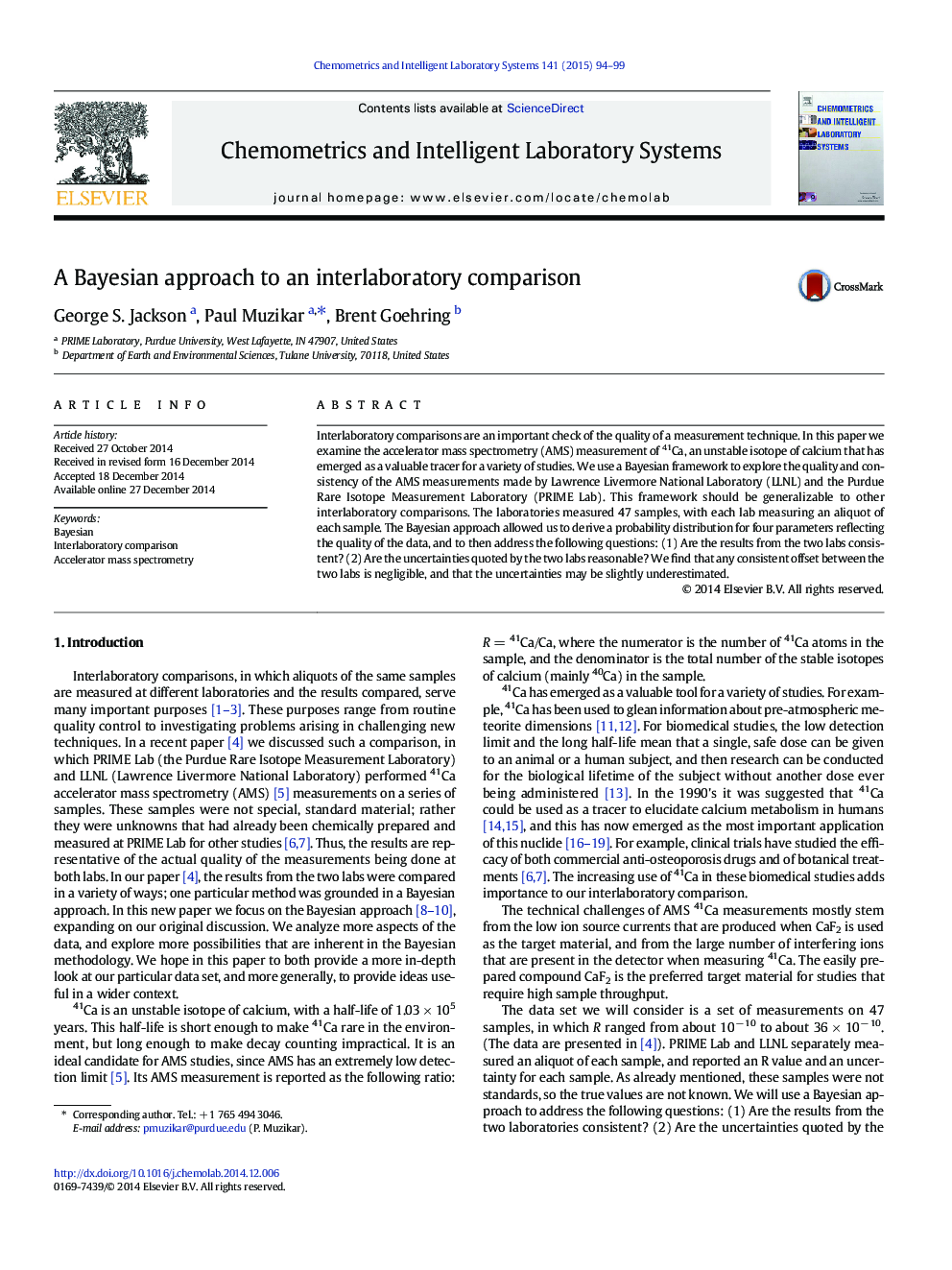| Article ID | Journal | Published Year | Pages | File Type |
|---|---|---|---|---|
| 1179386 | Chemometrics and Intelligent Laboratory Systems | 2015 | 6 Pages |
•Both PRIME Lab and LLNL performed 41Ca AMS measurements on a set of 47 samples.•We used a Bayesian framework to compare the results of the two labs.•We found that any offset between the two labs is small.•We were also able to examine whether the labs estimated their uncertainties accurately.•We analyzed how sensitive our results were to the prior.
Interlaboratory comparisons are an important check of the quality of a measurement technique. In this paper we examine the accelerator mass spectrometry (AMS) measurement of 41Ca, an unstable isotope of calcium that has emerged as a valuable tracer for a variety of studies. We use a Bayesian framework to explore the quality and consistency of the AMS measurements made by Lawrence Livermore National Laboratory (LLNL) and the Purdue Rare Isotope Measurement Laboratory (PRIME Lab). This framework should be generalizable to other interlaboratory comparisons. The laboratories measured 47 samples, with each lab measuring an aliquot of each sample. The Bayesian approach allowed us to derive a probability distribution for four parameters reflecting the quality of the data, and to then address the following questions: (1) Are the results from the two labs consistent? (2) Are the uncertainties quoted by the two labs reasonable? We find that any consistent offset between the two labs is negligible, and that the uncertainties may be slightly underestimated.
